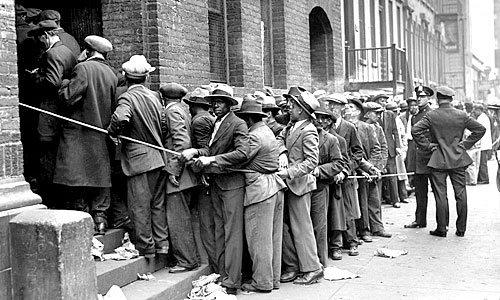
Unemployment probably climbed in September for a second consecutive month as slower U.S. growth prompted companies to limit hiring, economists said before a report today.
The jobless rate rose to 9.7 percent from 9.6 percent in August, according to the median estimate of 83 economists surveyed by Bloomberg News. Payrolls excluding government agencies rose by 75,000, while a drop in public staffing as the decennial census wound down caused total hiring to decline for a fourth straight month, the report may also show.
A lack of jobs underscores the concern expressed by some Federal Reserve policy makers that the rebound from the worst recession since the 1930s has been too slow and may require easier monetary policy. Economists surveyed by Bloomberg project unemployment will average at least 9 percent through 2011, which may restrain consumer spending, the biggest part of the economy.
“We’re probably going to have the unemployment rate march steadily higher in this kind of growth environment,” said Julia Coronado, chief economist for North America at BNP Paribas in New York. “For a lot of companies, there still is just so much uncertainty about where things are going. It’s very difficult for businesses.”
The Labor Department’s report is scheduled for 8:30 a.m. New York time. Private payroll estimates of the 60 economists surveyed ranged from no change to an increase of 110,000.
Census Workers
Overall payrolls dropped by 5,000, according to the survey median, reflecting the dismissal of about 78,000 temporary workers hired to conduct the census.
Economists forecast factory hiring climbed by 2,000 workers last month after an August decrease of 27,000, the first decline of the year.
An unemployment reading as projected means the jobless rate would have equaled or exceeded 9.5 percent for 14 consecutive months, surpassing the 13-month period from mid 1982 to mid 1983 as the longest span of elevated joblessness since monthly records began in 1948.
The report will also include a preliminary estimate for the annual benchmark payroll revisions to be issued in February. The projected changes, which will cover the period from April 2009 to March 2010, are based on state unemployment insurance tax data that cover almost all employers and update the original figures derived from a sampling of about 400,000 worksites.
Today’s figures will be the last employment data to come out before elections on Nov. 2 that will determine which party controls Congress. Support for President Barack Obama has fallen as the unemployment rate has been slow to retreat.
Voter Discontent
Obama’s job approval over a three-day period that ended Oct. 5 was 43 percent, compared with 53 percent at the same time last year, according to a poll from Princeton, New Jersey-based Gallup Inc.
The 763,000 increase in private payrolls in the eight months through August shows it’ll take years to recoup the 8.4 million jobs lost as a result of the recession that began in December 2007, the biggest employment slump in the post-World War II era. The contraction ended in June 2009, according to the National Bureau of Economic Research, the arbiter of U.S. business cycles.
The Standard & Poor’s 500 Index surged 8.7 percent last month, making it the biggest September gain since 1939, amid speculation the world’s largest economy will avoid slipping back into recession and bets that the Fed will buy more debt to support the recovery.
The economy grew at a 1.7 percent annual pace in the second quarter after expanding at a 3.7 percent rate in the first three months of the year and 5 percent at the end of 2009, according to the Commerce Department.
While some companies are still firing employees, others are recalling workers. American Airlines, the third largest U.S. airline, plans to recall 545 flight attendants and 250 pilots to meet demand for international flights as it begins an alliance with British Airways Plc and Spain’s Iberia. American, a unit of Fort Worth, Texas-based AMR Corp.
Bloomberg Survey

1 Comment
Comments are closed.